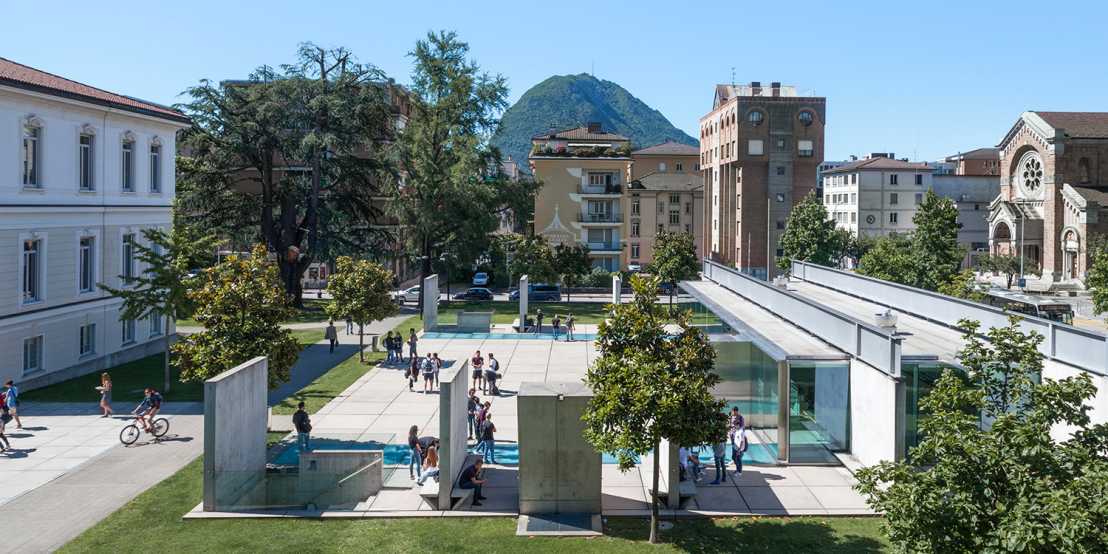Studying for a Master's degree in Ticino - ma certo!
After the ETH Bachelor's degree in Human Medicine, you can study for a Master's degree at one of the partner universities. One institution in particular stands out in popularity among students: the Università della Svizzera italiana (USI).

A survey of medical students at various Swiss universities, conducted by the SWIMSA education commission, confirms the USI's positive performance with excellent survey results.
The allocation of Master's students to the partner universities for 2023 has been carried out and communicated by the ETH. While a Master's placement in the Italian-speaking part of Switzerland was still associated with a greater need for explanation at the beginning of the Bachelor's programme in Human Medicine at ETH, the USI in Lugano is now the first choice among ETH medical students.
The reasons are manifold and are documented and outlined in detail in the "National Comparative Survey 2022" of the education commission SWIMSA (Swiss Medical Students' Association). The survey questioned 1176 medical students on the quality of education, organisation and well-being at the universities: Bern, Basel, Zurich, Lugano, Fribourg, Geneva and Lausanne.
The declared aim of the survey was to determine whether significant differences exist among the medical faculties in Switzerland with regard to student satisfaction. Eight selected aspects were examined for this purpose, as well as the general satisfaction of the students with the medical education at their university.
The following criteria were assessed:
- General satisfaction
- Curriculum and timetable
- Lectures and teaching
- Examinations
- Practical courses
- Clinical courses
- Communication
- Teaching material
- Mental health
The results show that USI is above the Swiss average in all survey items.
According to the local students, the high level of satisfaction with their curriculum and the timetable can be attributed to good implementation of PROFILES. This is also thanks to the high practical relevance with 2 clinical days per week and one practice week per semester on a specific topic (e.g. paediatric practice, family practice). The high interactivity of the lectures and the availability of the lecturers are associated with the fact that the teaching of the learning content is also assessed with high satisfaction. The active discussion of clinical cases in the lecture hall makes for interesting and relevant content, which in turn leads to increased motivation to learn among the students.
The theoretical lectures and clinical days are perceived as well coordinated and the 1:2 tutor-student ratio in almost all clinical courses also contributes significantly to the good performance here.
Satisfaction with the exams also seems to be higher in Lugano than the Swiss average. A thorough discussion of the exam questions in advance creates less confusion and a better adaptation of the questions to the students' level of knowledge.
The communication between the students and the school administration is rated as very remarkable by the students. Concerns are taken seriously and the Dean's Office is open to adjustments. One event that is particularly mentioned in relation to communication is a survey that the Dean's Office conducted in January 2021 to determine whether students felt sufficiently prepared for the OSCE (Objective Structured Clinical Examination) examinations during the pandemic. The exams were postponed as a majority of students voted in favour of this option.
As far as mental health is concerned, there are various mental health support systems available to students, such as the organisation "USI in Ascolto". Students have an uncomplicated contact point here to which they can address their concerns and problems.
The ETH Medicine project team has given high priority to the partnership with the USI from the very beginning. The study concept presented and the elaborate organisational structure meet the high standards of modern medical education today. A theoretically and practically sound Master's programme, geared to the challenges of medicine in the future.
You can find the study results in detail Download here (PDF, 12.3 MB)